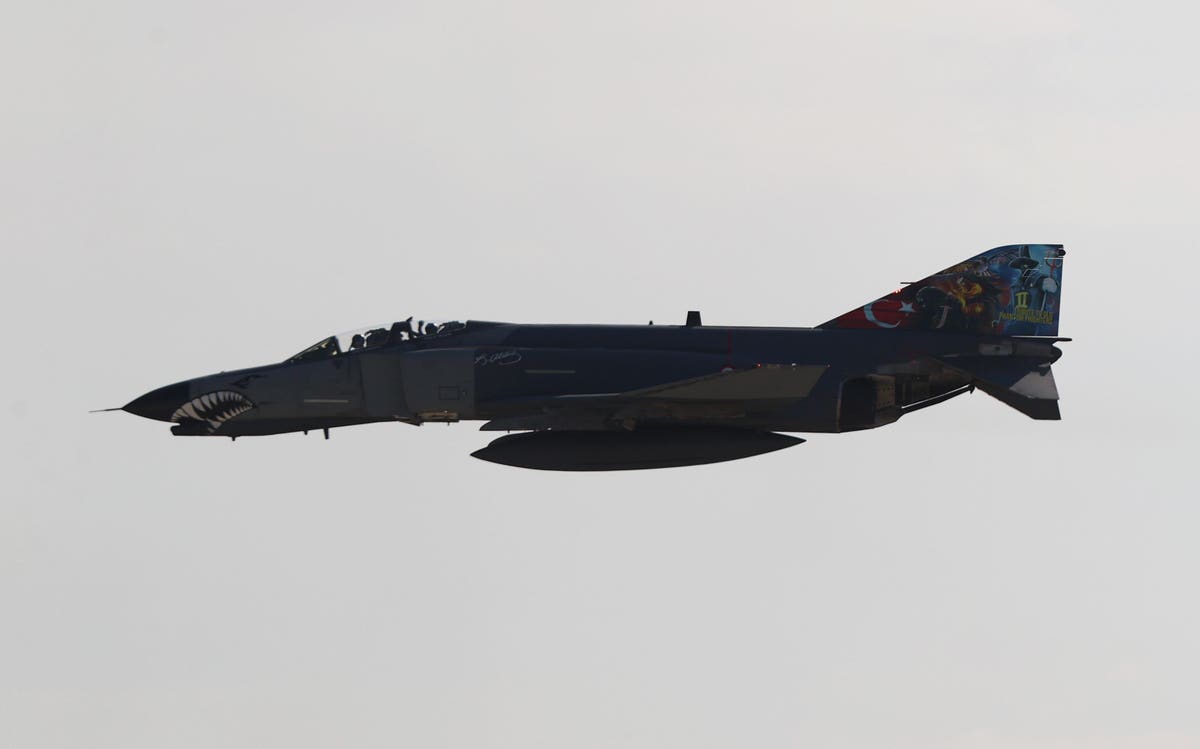A Turkish Air Force F-4 Phantom II fighter jet lost an external drop tank while flying over the capital, Ankara, on Sept. 4. While the incident only caused some minor damage on the ground, it serves as an apt reminder of the advanced age of Turkey’s F-4s and the risks inherent in keeping them in service for the rest of the decade.
The drop tank, designed to be jettisoned when empty, fell in a parking lot in Ankara’s Cankaya District, damaging three parked cars. Bystanders filmed the falling tank with their cell phones. The F-4 made a safe landing in central Turkey’s Eskisehir airbase.
While the empty fuel tank did not kill or injure anyone, the accident could have sparked a brief panic. After all, on the night of the July 15, 2016, coup attempt, putschists infamously bombed Ankara using air force F-16s, marking the first time the Turkish capital came under a military attack in 600 years.
“The broken part is not one that impacts the plane’s operation that much… It could be attributed to metal fatigue,” Turkish Chief of General Staff Intelligence Ismail Hakkı Pekin told local media shortly after the incident.
“Despite modernization efforts, these are aging aircraft that have been in service for several years,” he added.
Pekin was most likely referring to an Israeli project to modernize Turkish Phantoms beginning in the late 1990s. Under that $632 million deal with Israel Aerospace Industries (IAI), Israeli technicians upgraded 54 of Turkey’s 200-strong F-4E fleet to a new configuration known as Terminator 2020.
Aside from upgrading the vintage jet, the new configuration was designed to extend their service lives until, as the name suggests, around the year 2020. Turkey would go on to upgrade more F-4s to this configuration using Israeli-supplied modernization kits. At least 30 F-4E Terminator 2020 jets are still in active service today.
Turkey has since postponed this planned retirement until 2030, meaning these Phantoms will serve for a whole decade longer than initially planned.
In November 2021, when fielding questions from opposition MPs, then-Turkish Defense Minister Hulusi Akar confirmed Ankara’s plan to keep these F-4s in operation until 2030.
Akar also stated that “current modernization projects” would enable Turkey to keep F-16s operational for many more years. Those jets make up the backbone of Turkey’s fighter fleet, with the Turkish Air Force acquiring 270 F-16s of various models since 1987. Turkey has the third largest F-16 fleet in the world.
In 2019, the U.S. removed Turkey from the F-35 Joint Strike Fighter project and banned it from buying any of those fifth-generation stealth jets after Ankara took delivery of S-400 air defense missile systems from Russia. Turkey had plans to procure as many as 100 F-35A Lightning IIs for its air force, which would enable it to retire those remaining F-4s without creating a gap in capability.
Under that initial plan, Turkey’s indigenous stealth fighter project, initially known as the TF-X but given the official designation TF Kaan in 2023, would enable Turkey to begin retiring older F-16s when the first TF Kaans entered service by 2030. The oldest F-16s Turkey operates are the Block 30 models Ankara began acquiring in 1987.
With F-35s out of the picture, the TF Kaan will most likely replace those remaining F-4s instead, and that’s when and if they enter service under Turkey’s ambitious timetable. Ankara is also banking on U.S. approval to buy 40 new Block 70 F-16s and 79 modernization kits to keep its F-16 fleet operational and up-to-date.
Turkey has already started modernizing its Block 30s domestically, which suggests those new Block 70 F-16s, if delivered, could well be the aircraft that ultimately replace Turkey’s 30+ remaining F-4Es — with the TF Kaan replacing the Block 30 F-16s sometime in the next decade.
Turkey first acquired Phantoms in 1974, meaning those remaining aircraft will have served for over 50 years when they are finally retired by or around 2030.
Read the full article here





